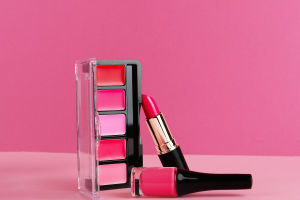Essential oils are volatile aromatic substances extracted from various parts of plants such as flowers, leaves, roots, seeds, fruits, bark, resin, and wood through methods like steam distillation, cold pressing, solvent extraction, or lipid absorption.
Due to their high volatility, essential oils evaporate quickly when exposed to air, hence they must be stored in dark, airtight containers.
Not all plants produce essential oils; only those containing aromatic glands are capable of doing so. These glands are distributed differently across various plant parts such as petals, leaves, roots, or stems. Once extracted from these glands, they become what we refer to as "plant essential oils." Essential oils consist of numerous constituents; for instance, rose oil can be composed of over 250 different molecules.
Essential oils have lipophilic properties, are easily soluble in fats, and their short molecular chains facilitate easy penetration into the skin, entering the body through the rich network of capillaries in the subcutaneous fat layer.
Being composed of small molecules, these highly volatile substances can be absorbed by the mucous membranes of the nasal cavity, sending signals directly to the brain, and regulating both physiological and psychological functions through the limbic system.
Hence, in aromatherapy, essential oils can enhance both physiological and psychological functions. Each plant essential oil has a unique chemical structure determining its fragrance, color, viscosity, and mode of action within the body, thus giving each oil a unique set of functional properties.
Essential oils are highly concentrated substances, requiring a large amount of plant material to extract a small quantity of oil, thus needing to be used judiciously.
1. Inhalation Method: Inhaling essential oils through the respiratory tract is commonly used for respiratory ailments such as coughs and congestion.
However, caution is advised for asthma patients to avoid strong inhalations that might hinder breathing. This method can also open facial pores, aiding in skincare, and offering beauty benefits.
Method: Pour nearly boiling water into a glass, ceramic, or stainless-steel container (such as a basin, bowl, or cup), add 4-6 drops of essential oil, cover your head with a large towel or cloth, bend over the container, and inhale through the mouth and nose alternately until comfortable. This is an effective method for treating colds and respiratory infections and is also excellent for refreshing the mind and changing moods.
2. Absorption through Massage: Essential oils need to be diluted and blended with carrier oils before use. They are quickly absorbed into the skin during massage, especially effective when the body is slightly damp after a bath.
Massage intensity varies depending on the need; vigorous massages like kneading and tapping can invigorate the senses, while gentle strokes and pressure can relieve stress or aid sleep. This method can be applied to facial care, full-body massage, weight loss, abdominal pain, constipation, etc.
3. Bathing Method: Essential oils can be used in baths or foot baths, but undiluted essential oils may damage certain materials in the tub due to chemical reactions. Therefore, ceramic, stainless steel, or wooden tubs are recommended. Before soaking, mix the essential oil thoroughly, and ensure the water temperature is not too hot to prevent rapid evaporation of the oil. Soak the whole body for about 20 minutes.
As a natural therapy and beauty product, essential oils have been widely used in daily life. While enjoying the benefits they offer, it's essential to respect the resources of plants, use them rationally, and collectively protect the natural environment.


